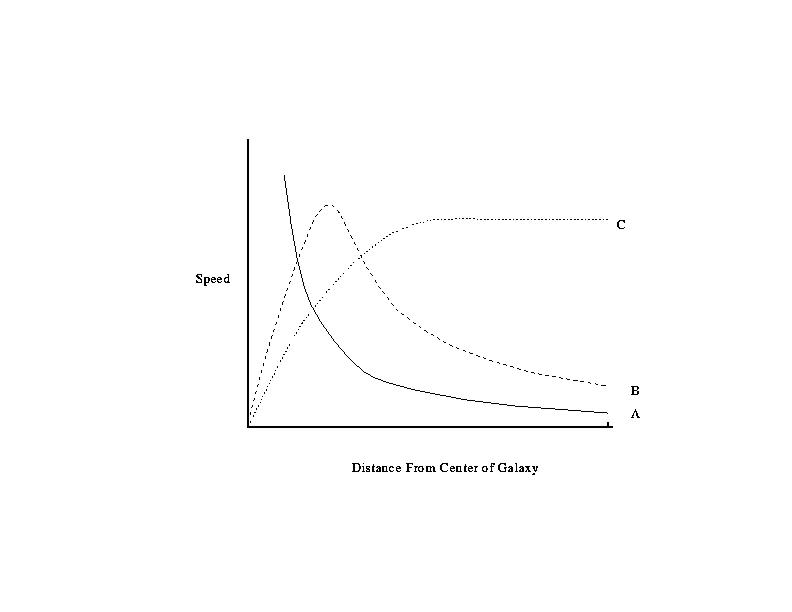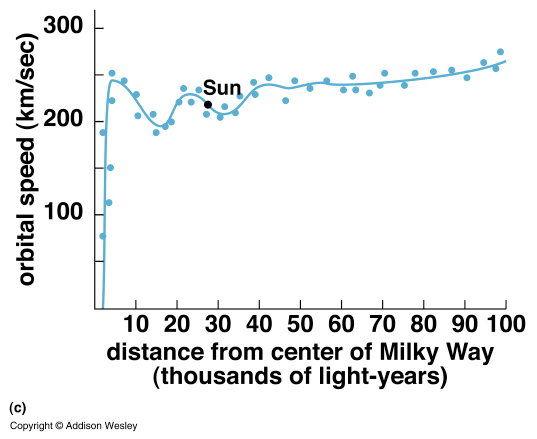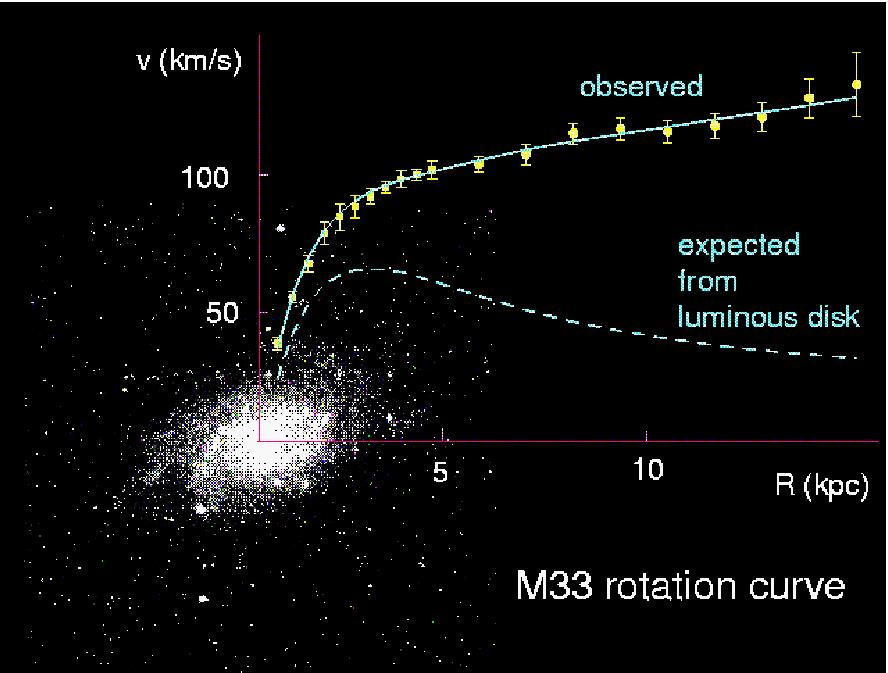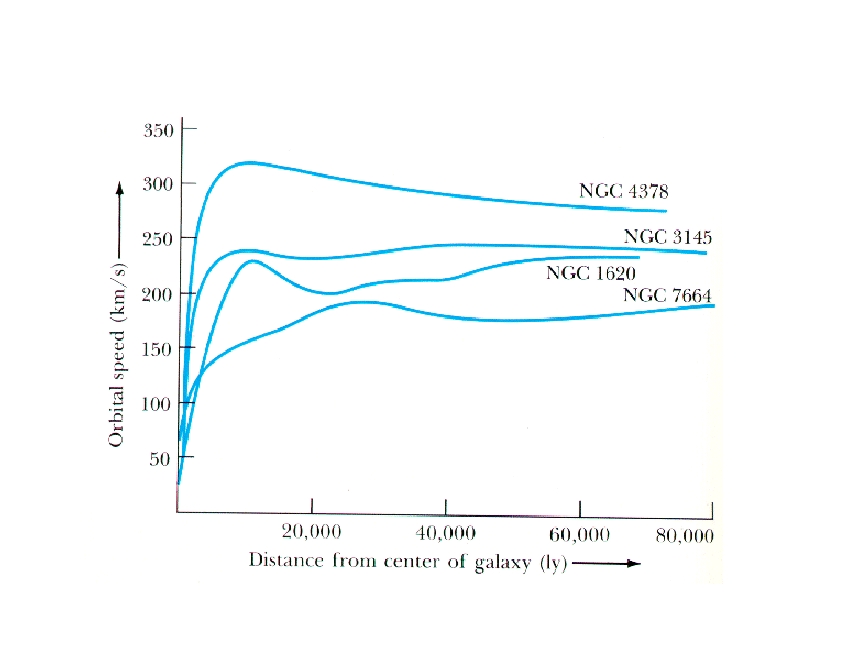The gist of the method is to note that all objects are in orbit around
the center of our Galaxy. To see how this allows us to infer the mass of
our Galaxy, consider orbital motion. First, consider orbits about the Earth.
 |
- A cannon fires a cannoball horizontal to the surface of the Earth. The
Earth's gravity pulls the cannonball toward the center of the Earth.
- If the cannonball has a small horizontal velocity, it is pulled to the
ground before it has had much chance to move,
Path A.
- If the cannon shoots the cannonball at a higher speed, then it will travel
further in the horizontal diretion before it is pulled to the ground,
Paths B anc C.
- Now, here is the key, because of the curvature of the Earth, the ground
falls away from the cannonball. If the cannonball is given the
correctvelocity, then the rate at which it falls and the rate at which
the ground falls aways from it can be made the same and the cannonball never
strkes the ground; it goes into orbit, Paths D, E, and
F.
- The critical speed required to go into orbit is determined by how hard the
Earth pulls on the cannoball,
F = - G(MEmca)/R2
|
A similar situation arises for the Earth as it orbits the Sun.
This is the basis of the method used to determine the mass of
the Milky Way galaxy (and other disk
galaxies). However, before we move on, we have one further tweak to
consider.

A. In the Solar System, the planets orbit about the Sun. None of the
planets orbit within the body of the Sun. The planets closer to
the Sun feel stronger gravitational tugs due to the Sun and thus must
travel faster to maintain their orbits. For example, the Earth travels
with a speed of ~30 km per second. Pluto travels with a speed of
~4.6 km per second. This is typical of a sytem where bodies orbit outside
of the attracting mass.
B & C.
Suppose we lived in a spherical system where the mass was spread out and we
orbited inside of the body. Newton showed that only the mass contained
within our orbit contributed to the gravitational force on us.
So, if we approached the center of the object, the
gravitational force would, in general, vanish. In such an extended object,
the orbital speed would not fall-off as quickly as one moved away from
the center of the body
and, in fact, the orbital speed could stay the same and could
even increase in some cases.
For the Milky Way, we find that the orbital speed increases and then
remains roughly constant. This implies that we are still within the
body of the Milky Way, even at the largest distances from the center
of the Milky Way. We have not yet located the edge of the Milky
Way; the Milky Way extends much further than the edge of the disk
of stars (the visible disk)!
- Recasting the equation given above (for the determination of the mass
in a galaxy), we find
Mass = 9x1010(speed/220 km/s)2(orbit/8 kpc) Solar masses
- The mass contained in the Milky Way galaxy (in its visible disk)
is then 2x1011 M(Sun). Note that if we count up the visible stars
to get the luminous mass, we find that we can only account for 30 % of the
mass; 70 % of the mass must be Dark Matter.
- the mass contained in the Milky Way galaxy (out to as far as we can
see HI gas) is 6x1011 M(Sun).
Oh my, the mass where we can see stars is only 1/3 of the mass of the
entire Galaxy of which only 30 % is normal luminous matter.
This suggests that a lot of mass in the Milky
Way is in some form which does not radiate large amounts of light
(Dark matter). This interesting result will keep popping up
throughout the rest of the course as we discuss the mass of the Universe.
Return to Lecture 2





